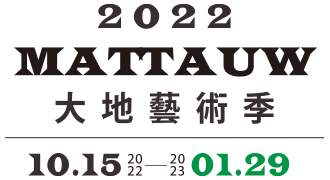3094公里間的熟悉與親密 (新加坡—台灣)
中文翻譯 ─── 杜佩峰
My relationship with clay began about 20years ago in Singapore. Over the years, I had uncovered a secret property of clay, that it had the ability to transport the user to different countries and while there, becoming a bridge to form solid connections between strangers of varying cultural backgrounds and identities. My practice and body were imbued by these random experiences and memories, extending my identity as a Singaporean. I shall not proceed further in this essay regarding that, and rather indulged in the idea that my body acts as a “sponge”.
While here in Taiwan, as I became increasingly involved in the project traversing between the concrete and soft soil on the mountains, weaving in-between the bamboo forest, squinting my eyes under the setting sun to track the buzzing of bees to track their precious honey, maneuvering over algae coated rocks along the streams at night to fish. I was soaked; the cuts on my hands register the sloping tracks, bruises remembered my inexperience among the terrain, and my body having to keep up with a different momentum. For a while this experience in the Taiwan mountain seem new and refreshing for a city dweller hailing from Singapore but very quickly a sense of familiarity took over.
My body began feeling familiar first from the sound of spoken language between Basuya and his parents. Being 3000km away from home, it reminded me of Bahasa Melayu the Malay language. The certain tones and the rhythm employed in the conversation were all too familiar. It felt as if I was back home, hanging out with my Malay friends in the cafes or playing soccer. In an interesting yet embarassing one-sided manner, I am at home with Basuya and family.
Another stage of familiarity emerged in my body as we headed into the mountains and weaved within the bamboos or balancing our body weight as we stepped over steep slippery soil. To be honest, my first encounter in the forest derived from my mandatory military training in Singapore. Which in a way I am grateful for. Like Basuya, we had to bash through vegetation and sort of create certain pathways. There were no roads or pathways, but Basuya’s familiarity leads us along. As we stopped, maybe for a break, the sounds of our bodies moving faded away and a silence enveloped me. Not that there were no sound, but a certain subtle vibration between my body and nature. It rang deeper from those times I had to be alone in the forest manning position at night.
Finally, we arrived to Basuya’s plot. Sitting by the tracks we ate fresh pineapples that were grown there. Beneath where we sat was clay, formed via weathering over who knows how long. The colour was tan brown almost resembling the factory produced Taiwanese stoneware No.208. Scooping up the clay, you could feel the many different sizes of pebbles meshed together with the clay. Its texture was pretty smooth then expected and when added with the right amount of water to test its plasticity, proved to be a material worth using. Right away the image of roasted wild boar meat served in a bowl made with that clay came to my mind. The bowl would be coloured with maybe shades of brow, red or black by the raw flames that touches it as it raises the temperature. Vitrifying within a small wood-fired kiln, we made with the clay from the mountain.
大約20年前,我在新加坡初識陶土,多年來,我發現了陶土的一項隱密特質:它能將使用者帶往不同國家,成為一座橋樑,與各種不同背景的陌生人建立堅實的聯繫。這些隨機的經驗與記憶充溢我的實踐與身體,擴延了我作為新加坡人的身份認同。本文不會進一步討論這個問題,而是流連於身體作為一塊「海綿」的概念。
當我身在台灣,逐步涉足於陶土計畫:穿越山野間堅硬與柔軟的土壤,並在竹林穿梭;在夕日瞇起眼睛追蹤逐蜜的嗡嗡蜂跡,並在夜裡熟練地游弋於溪岸藻類叢生的岩石,以進行漁獵。在這個過程中,我被浸透了:手掌上的傷痕紀錄了陡峭的山徑,瘀青則提醒了我對自然環境的不熟悉,而我的身體必須跟上不同的動勢。對來自新加坡的城市居民如我,這種在台灣山野的經驗讓人耳目一新,但很快地,一種熟悉感佔據上風。 在巴蘇亞與他父母對話的聲音中,我的身體第一次感受到這種熟習,在距離家鄉3000公里遠的地方,他們對話的聲音讓我想到Bahasa Melayu,也就是馬來語。那種特定的音調與節奏實在太親切,我彷彿回到家園,和我的馬來朋友在咖啡廳閒度時光,或是踢足球。或許是我滑稽而尷尬的一廂情願,但我在與巴蘇亞相處時的親密感,彷如與家人同在。
在我們進入山野或穿梭竹林,與試圖在溼滑土坡維持平衡時,我的身體湧現另一種熟悉感。老實說,我是在新加坡服義務兵役時第一次接觸森林,而某程度而言我其實很感激這種義務訓練。像巴蘇亞一樣,服兵役時我們必須在植被間開闢道路,如同在台灣,巴蘇亞熟練地引導我們在毫無道路與縫隙的地方行走。當我們短暫間歇,身體移動的聲音消逝,寂靜圍繞著我;並非是毫無聲音,而是一種自然與身體間的細微波動,它深深觸及那些我獨自在深夜的森林站崗的日子。
終於,我們抵達巴蘇亞的菜園,坐在路邊吃著菜園種的新鮮鳳梨。坐處底下是黏土,經由不知多久的時日形成,它呈現赭褐色,幾乎接近工廠製造的台灣炻器208號。舀起粘土,你可以感覺到許多不同大小的鵝卵石與粘土相互嚙合,它的質地比預期更光滑,經過加水測試可塑性後,證實是一種值得使用的材質。我立刻想到以這種黏土製造的碗來承接山豬肉的畫面,這個碗會被逐漸升溫的粗獷焰火上色:或許是不同層次的棕色、紅色與黑。在小型柴窯內熔結,我們透過山野間的泥土創作。

